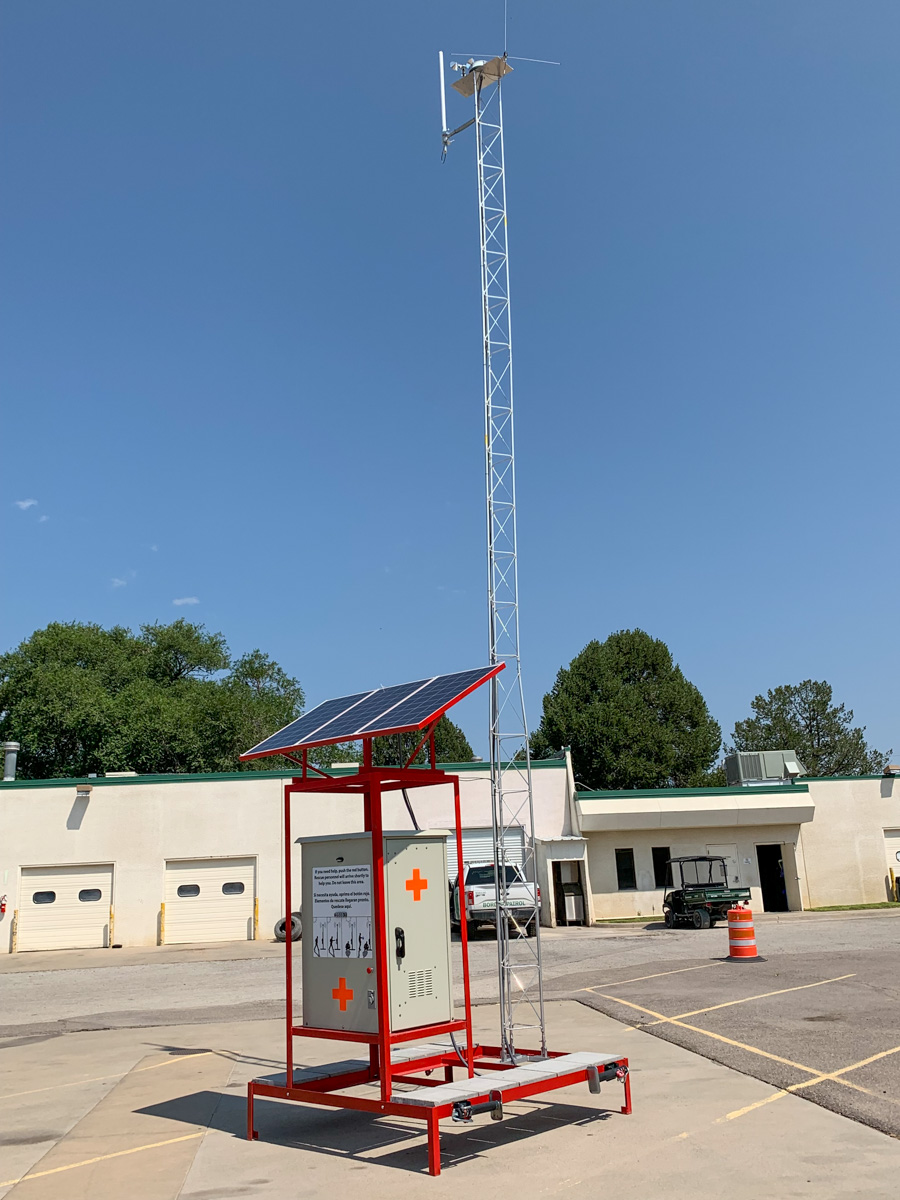
By Shanna Cummings
Border Patrol (BP) Big Bend Sector is rolling out rescue beacons to help undocumented immigrants in crisis.
The 30-foot tall solar-powered beacon consists of a base and a metal tower capped with spinning reflective mirrors for the daytime, and a blue light for the night that can be seen for up to 10 miles. The base of the beacon displays rescue symbols in fluorescent orange, includes instructions in Spanish and English, as well as a red emergency activation button. Cameras monitor the beacon’s immediate vicinity and alert BP to movement.
Once activated, it will take a digital picture of the person and connect with US Border Patrol, which sends agents and EMTs to collect them and administer medical attention. There are no medical supplies on the beacon, but there is a USB phone charger port.
One beacon deployed in June near Sierra Blanca has resulted in at least 10 persons rescued.
Placards will also be installed in areas where there is cell phone service. The beacons are paid for by funding from the Missing Migrant Program.
BP considers immigrant traffic patterns and geography when deciding on a location for the beacons and the placards. The beacons are movable.
In order to deploy all 30 beacons in the sector, BP needs to coordinate with landowners for permission to use their land and possibly announce the location of the beacon.
Landowners like those in Concerned Far West Texans, who are raising awareness of the impact of illegal immigration on their lives and welfare. Many landowners have experienced property damage and physical danger by undocumented immigrants passing through their property. During February’s polar plunge that locked Texas in often historically low temperatures, one immigrant set a building on fire so he would be located. Landowners have also talked about gates left open and livestock escaping, fences cut, even homes invaded and lives threatened.
The beacons address one part of the ongoing crisis affecting the border. Aside from regular patrols and surveillance efforts, BP also relies on tips from community members who see concerning activity like migrants beside the road or under overpasses, or even on game cameras installed on their land. In cases that involve criminal behavior like breaking into houses or barns, BP calls in local law enforcement.
BP Sector Chief Sean McGoffin reiterated that community members should call 911 if they find migrants along the road or on their land. They should not pick them up or attempt to transport them anywhere.
McGoffin emphasized the role of criminal organizations in Mexico in both the influx of undocumented immigrants and the 32 deaths so far this fiscal year in the Big Bend Sector.
“Nothing crosses that border without the transnational criminal organizations allowing them to do so. They have to pay to be smuggled into the United States,” he said. “I think the most important thing to know is, even if they have to pay a smuggler to cross that border, they shouldn’t have to pay with their lives.”
“It’s very rugged, very difficult terrain and often very hazardous to cross. And we oftentimes have people that don’t recognize that, and are not being told that by the smugglers. And when those smugglers, when they (immigrants) can’t keep up, the smugglers leave them, and they die.”
If immigrants survive the inhospitable and dangerous overland trek to their pick up locations, they still may experience life-threatening conditions. Smugglers have used various transportation methods, including moving vans, to sneak immigrants through. Many vehicles smuggling migrants have crashed or rolled over in transit as well.
“We know right now that smuggling organizations are operating out of Ojinaga, Mexico and Ciudad Chihuahua. We know who they are. And so we’re gonna be working our best to try to prosecute everybody we can with this.”
Once smugglers are identified, BP turns them over to the US Attorney, who decides whether or not to take up the case. Some local law enforcement may also choose to prosecute, but the process is expensive for counties.











